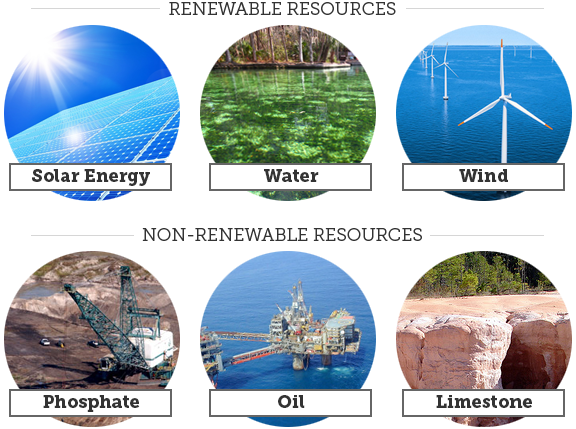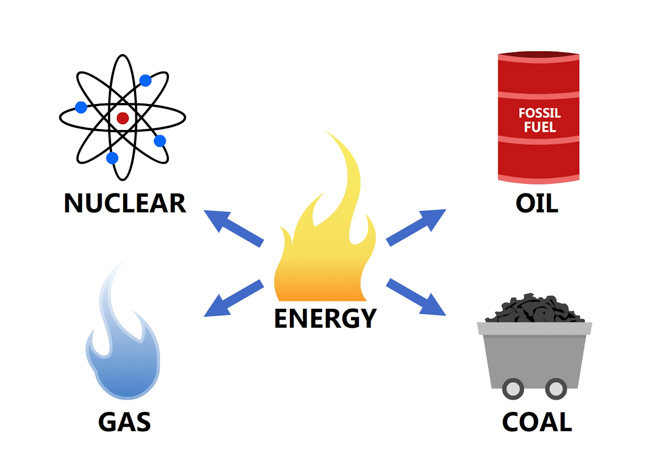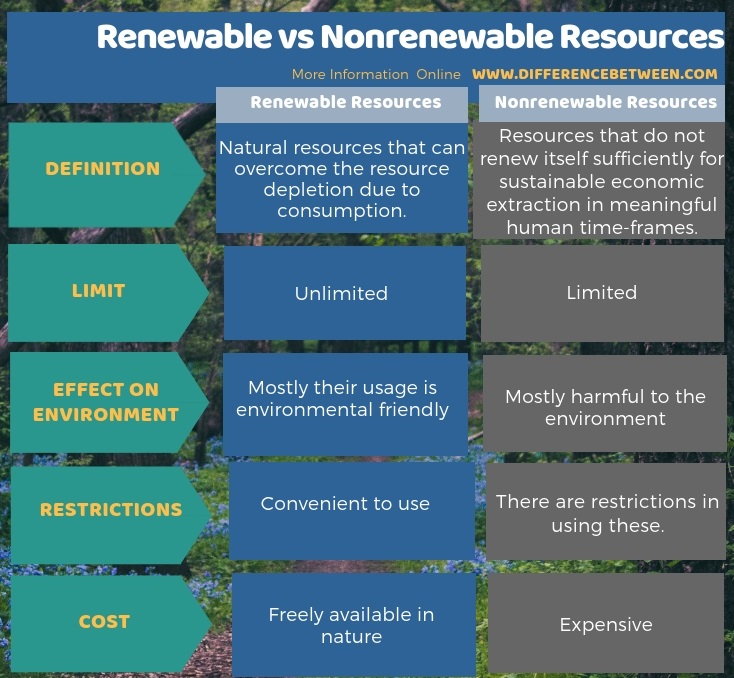Resources- Renewable and Non-renewable Study Guide
Introduction:
The earth is packed with so many natural resources, and these are things we interact with, directly or indirectly, every day.Natural resources are objects or materials naturally present on the earth and are used by people. These natural things can be further classified into two types: renewable and nonrenewable resources.
It is easy to classify all natural things on earth as renewable and nonrenewable resources once you know exactly what they are. If you ask yourself, “is coal a renewable resource?”, read on and find out why it isn’t and which resource is renewable and nonrenewable! You will also be able to define renewable and nonrenewable resources with examples clearly.
What are Renewable Resources?
-
Renewable resources are resources that cannot be exhausted even after years of constant utilization. In simple words, these are resources that can never run out and always grow.
-
A common example of renewable resources that we interact with every day are trees! Even if you cut them down and utilize them, they can still regrow from sprouts and seeds. They are also considered one of the most useful renewable resources because we use them to create around 8000 different products.
-
Other common examples of renewable resources are water and air. Though they do not grow like trees, they always exist and are in their cycle at least in one form.
-
Therefore, renewable resources are essential things that are important for the existence of most living creatures on earth.
What are Non-Renewable Resources?
- Resources that cannot be replaced immediately after consumption are known as non-renewable resources.
- Constant consumption leads to depletion of the materials.
- These resources are mostly found on the , present in fixed amounts.
- They do not renew very easily and might take millions of years to be formed and replaced.
The best examples of non-renewable resources are the fossil fuels (like coal, natural gas, and oil) that are burned for energy. are also non-renewable resources.
Differences Between Renewable and Nonrenewable Resources
A few major differences in renewable and nonrenewable resources based on certain parameters are listed down below.
1. Depletion
- Renewable resources will not be depleted after constant usage over time.
- Non-renewable resources, unlike renewable resources, deplete over time.
2. Sources
- Sources of renewable resources include water, sunlight, wind, and other sources like fumaroles and hot springs.
- Sources for non-renewable resources include various minerals and fossil fuels like petroleum and coal.
3. Cost
- The upfront cost for energy harvested from renewable resources is relatively high. For example, the technology used to generate electricity from a renewable resource like the wind is costlier than those used to create electricity from fossil fuels.
- The upfront cost for non-renewable energy is relatively low.
4. Environmental Impact
- Renewable resources mostly emit very low carbon and have a low carbon footprint.
- Carbon emissions and carbon footprint are higher for non-renewable energy.
5. Area Requirements
- Renewable energy resources usually require a huge area, especially solar and wind farms.
- Non-renewable energy sources require a relatively low area for their technology.
6. Infrastructure Requirements
- Renewable energy sources require costlier infrastructure, and these are not easily accessible in many parts of the world.
- Non-renewable energy sources are cost-effective and are easily available in most parts of the world.
Popular renewable energy sources
Energy generated from renewable resources is called renewable energy sources, which means that energy is sustainable. Some of the most popular renewable energy sources are:
- Hydro energy
- Wind energy
- Tidal energy
- Biomass energy
- Geothermal energy
Popular non-renewable energy sources
Non-renewable energy sources generate energy from resources that deplete quickly over time. Some of the most common non-renewable energy examples are:
- Coal
- Petroleum
- Uranium
Conclusion:
- Renewable resources are resourced that would not exhaust even after continuously using them.
- However, resources that are not immediately replaced after usage and can be depleted with constant consumption are known as nonrenewable resources.
- The major difference between renewable and nonrenewable resources is that renewable can never be depleted while non-renewable deplete over time.
- In the future, the usage of renewable energy is expected to rise because renewable resources have lesser carbon emissions, long term benefits, and these are infinitely available.
FAQs:
1. What are 5 renewable and non-renewable resources?
The five renewable resources are:
- Sunlight
- Groundwater
- Wind
- Soil
- GrassThe five non-renewable resources are:
- Oil
- Coal
- Aluminum
- Phosphates
- Steel
2. What are renewable resources and non-renewable resources with examples?
- Resources that will not be exhausted even if continuously used are known as renewable resources. Popular examples of renewable resources are wind, tidal, and solar energy.
- Non-renewable resources are the ones that will be depleted when used continuously over a long period. Examples: coal, natural gas, petroleum, and many rare minerals are non-renewable resources.
3. Are biofuels renewable?
Biofuels are over 35 years for biofuels based on resources on forest residues and over one year or less for those based on animal wastes, crops, and their residues.
4. What is a non-renewable resource?
Non-renewable resources definition: Natural substances that cannot be replenished with the consumption rate are known as non-renewable resources. This means that the availability of these resources will decrease throughout constant usage, making their supply very limited.
We hope you enjoyed studying this lesson and learned something cool about the Resources – Renewable and Non-renewable! Join our Discord community to get any questions you may have answered and to engage with other students just like you! We promise, it makes studying much more fun! 😎
Sources:
- 10 Examples of Non Renewable Resources. https://www.energywarden.com/10-examples-of-non-renewable-resources/. Accessed 1 Dec, 2021.
- Non-renewable energy. https://www.nationalgeographic.org/encyclopedia/non-renewable-energy/. Accessed 1 Dec, 2021.
- Renewable Resources. https://www.nationalgeographic.org/encyclopedia/renewable-resources/. Accessed 1 Dec, 2021.
- What are some renewable resources? Examples of alternative energy. https://news.energysage.com/examples-of-renewable-resources-and-alternative-energy/. Accessed 1 Dec, 2021.
- Resources. https://flexbooks.ck12.org/cbook/ck-12-biology-flexbook-2.0/section/6.27/primary/lesson/renewable-and-nonrenewable-resources-bio/. Accessed 1 Dec, 2021.
- Different Examples of Nonrenewable Resources. https://homeguides.sfgate.com/different-examples-nonrenewable-resources-79616.html. Accessed 1 Dec, 2021.
- Types of renewable energy. https://www.edfenergy.com/for-home/energywise/renewable-energy-sources. Accessed 1 Dec, 2021.



